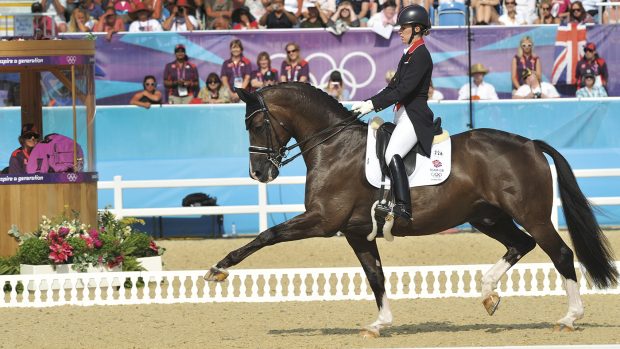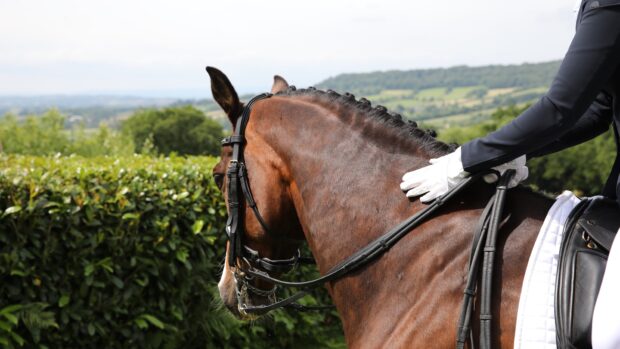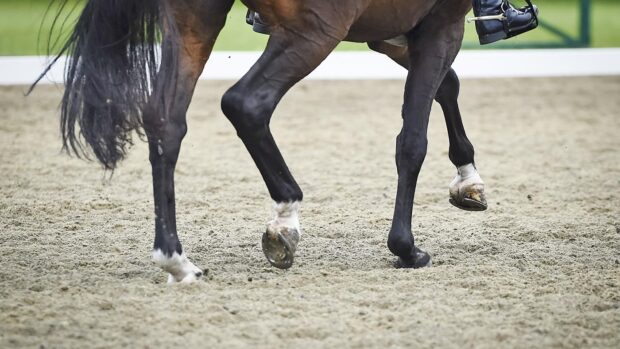The British Dressage (BD) LeMieux Quest Championships are a must-do grassroots series, offering a fun, friendly and accessible way to experience affiliated competition.
Quest isn’t just about results – it’s about progress, teamwork, and the joy of the journey. Whether you’re riding your first dressage test or chasing a national title, Quest creates a supportive and inclusive space where effort, improvement and horsemanship matter just as much as winning – exactly how dressage should be: fun, rewarding and open to all.
But how exactly does Quest work, and how can you get involved? Let’s break it down.
What is Quest dressage?
Quest is a relaxed, entry-level dressage series designed to encourage riders of all ages and experience levels to take part. With three levels to choose from and two exciting championships to aim for, it’s the perfect way to enjoy dressage in a fun and welcoming environment.
- Team Quest – Compete as part of a team
- My Quest – Ride as an individual
You can compete in both if you like! There’s no need for show jackets, and team colours are encouraged – so get creative and have fun!
What levels can I compete at?
Quest competitions run at three levels in both My Quest and Team Quest:
✔ Intro – Walk & trot only, ideal for those starting out
✔ Prelim – Adds canter work, including 20m circles
✔ Novice – More advanced, with lengthened strides & 15m canter circles
It’s a good idea to check the BD handbook beforehand to make sure you’re eligible for the level that you choose to ride at. The tests are also regular BD tests, but Quest only runs the short arena (20×40) versions.
There are also two age categories:
✔ Under 21 – For riders up to the end of the year of their 21st birthday
✔ Open – Available to riders of any age
How does Team Quest work?
Love team spirit and friendly competition? Team Quest is perfect for you!
It’s the perfect way to enjoy dressage alongside friends – whether you’re a seasoned competitor or just starting out.
- Each team consists of three or four riders, all competing at their chosen level
- The best three scores count towards the team’s total – just like in international team competitions
- You can register up to seven riders for your team, with unlimited reserve horses
- Each team nominates a captain and selects a region to compete for
- Riders can compete for more than one team, but must ride at different levels for each
How do you qualify for the championships?
The Quest season is split into two series:
✔ The LeMieux Quest Series: 1 January – 31 August
✔ The LeMieux Quest Winter League: 1 September – 31 December
The Quest series culminates at the LeMieux Quest National Championships in November, where a total of 32 riders in intro, prelim and novice My Quest classes in the open and under-21 sections, along with 24 Team Quest teams from both categories, will compete for top honours and fantastic prizes.
To qualify, riders and teams accumulate points throughout the season at BD Quest shows. You can compete at as many competitions as you like – but only your best five results count!
The higher the placing, the more points awarded – up to a maximum of 10 for a win.
Team Quest: The top 10 open and under-21 teams at the end of qualifying will battle it out at their chosen semi-final.
My Quest: The top 12 open and under-21 combinations will qualify for their chosen semi-final.
Qualification process:
- My Quest: The top three riders from each level in both categories secure a place at the National Championships
- Team Quest: Qualification is determined by a ratio system based on final semi-final leaderboard standings
- Wildcards: Any remaining championship spots in both My Quest and Team Quest will be allocated to the highest-scoring combinations from the semi-finals
What is the Quest Winter League?
Fancy more competition opportunities? The Quest Winter League (1 Sept–31 Dec) offers extra chances to compete, with a national leaderboard updated fortnightly.
Points are awarded the same way as the Quest Championships, with riders competing at their local BD Quest venues.
Competing in the Winter League does NOT affect your eligibility for the summer Quest Championships.
At the end of the season, the overall top three Team Quest and My Quest combinations will receive a prize, with the top 10 in each level and section awarded a rosette. There is no championship show for the winter league.
Do I need a British Dressage membership for Quest?
Not at all! You don’t need a full BD membership to take part – BD Club membership is all that’s required, making it an accessible and affordable way to dip your toe into affiliated dressage.
For £60 per year, BD Club membership gives you access to all Quest competitions and no upgrades are needed if you qualify for the championships.
With this membership, you can also have a go at qualifying for the Petplan Area Festivals at prelim bronze, try your hand at Red Gorilla Combined Training or dressage to music classes as well as joining regional training sessions.
BD now also offers an exclusive Quest Winter League membership for just £15 – perfect for non-members wanting to compete through the winter!
How to get started
✔ Join British Dressage: Sign up for BD Club membership (£60 per year)
✔ Form a team (if doing Team Quest): Register via email at teamquest@britishdressage.co.uk
✔ Choose your colours: Get creative with matching team outfits and saddle pads
✔ Find & enter competitions: Check the BD fixtures list for Quest events near you
✔ Learn Your Tests: Use the BD TestPro App or purchase tests from the BD Shop
- To stay up to date with all the breaking news from major shows throughout 2025, subscribe to the Horse & Hound website
You may also be interested in:

Fancy trying affiliated dressage, but not quite sure where to start? You need to read this…

Your guide to the Petplan Area Festivals, including how to qualify for this championship dressage series

8 training gems from Carl Hester that could transform your dressage scores

7 things you wanted to know about affiliated dressage but were too embarrassed to ask

Struggling to learn and remember your dressage test? Here’s the secret to success…

Subscribe to Horse & Hound magazine today – and enjoy unlimited website access all year round






